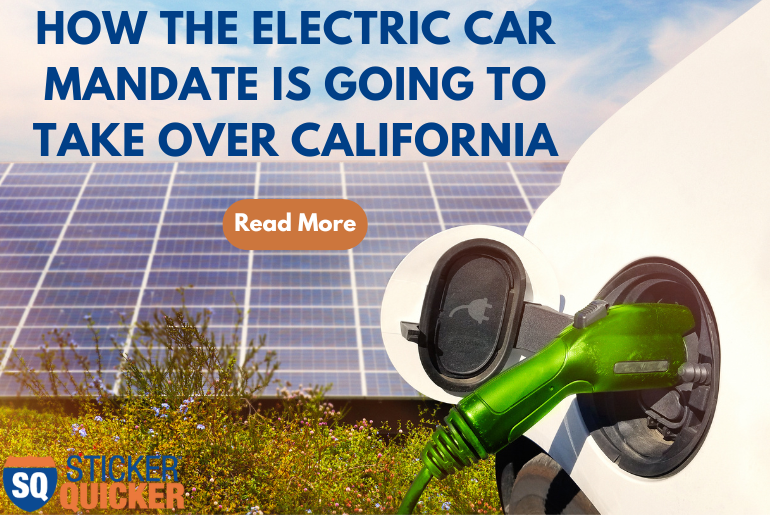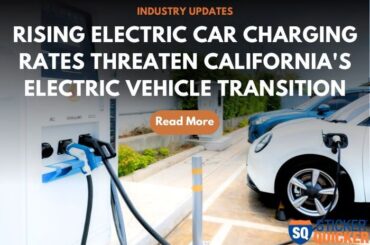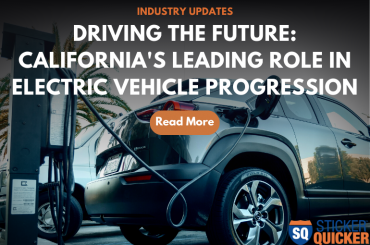With an increased focus on sustainability and reducing carbon emission, California has implemented a new rule establishing a path to reaching zero-emissions. The goal of this newfound mandate is to “accelerate to 100% new zero-emission vehicle sales” by 2035. Thus, over the summer, to reach these goals, The California Air Resources board enacted the Advanced Clean Cars II Rule.
The proposal includes an approach to diminishing carbon emissions and to rapidly minimize light-duty passenger vehicles’ emission by 2035. Primarily, the proposal requires an influx of zero-emission vehicles and words to implement technologies such as hydrogen fuel cell electric and plug-in hybrid vehicles, as well as battery-electric cars and trucks. The goal of utilizing sustainable vehicles is to meet climate change emission standards and to increase air quality. Thereby making Governor Newsom’s executive order a reality that all new passenger vehicles sold in California to be zero emissions in 2035. On the other hand, the proposal suggests the implementation of Low-Emission Vehicle Regulations, which will include standards for larger trucks and gasoline cars to reduce smog-forming emissions. California already leads the largest zero-emissions vehicle market in the country and more than 15% of all cars, SUVs, and trucks sold are either zero-emissions and/or plug-in hybrids.

The goal of this proposal is to reduce air pollution and to improve public health while mitigating the rapidness of climatic degradation. According to the California Air Resources board, by increasing the number of ZEVs (zero emission vehicles), vehicle pollution in California will decline at a rapid rate. Furthermore, the proposed zero-emission vehicle standards include:
- Setting minimum warranty and durability requirements
- Implementing charging and battery labeling – which will help consumers replace their fossil fueled cars, trucks, and SUVs with new or relatively used vehicles that are safe and environmentally beneficial
- Increased serviceability
- Tending to lower-income/communities disproportionately affected by climate change – making the switch to ZEVs more feasible and accessible
Evidently, Governor Newsom is working to quickly and effectively lower emissions in the State of California. And according to nationwide statistics, California is leading the transition to electric vehicles due to the nature of their proposal – which is inherently progressive and rapid. Through this mandate, they are establishing a definite plan that will meet required ZEV sales. The goal is to reach a 100% threshold over the course of the next 12 years. Especially since California, unlike other states, is creating a proposal that includes lower-income communities and those who are more affected by climatic crises than others. The goal of these regulations is to provide consumers from all socio-economic classes with accessibility to long-term zero-emissions benefits and to ensure that ZEVs are durable and sustainable – as well as affordable.
But Why Electric Cars?

If you are unfamiliar with the impact of transportation on the environment, here are some reasons as to why the state of California is so focused on implementing zero-emission vehicles.
According to environmental analysts, transportations serves as the largest source of global warming emissions amongst all operations in the state of California. On the other hand, vehicles and public transportation are the primary cause of air pollution as well. Thus, another aspect of this goal is to reduce smog-causing pollution by 25% by 2037 in order to maintain a higher standard of human and environmental health. Another reason Governor Newsom and other Californian representatives are pushing this mandate is because most often it is lower-income communities that are affected the most by the climatic crisis. This is due to the fact that lower socio-economic communities are often located in areas with heavy traffic, surrounding freeways and throughways. Thus, to mitigate the risk of decreased quality of life, the program estimates large improvements in human health. For example, from 2026 until 2040, the mandate is estimated to mitigate health crises that allot for $13 billion of state funding. More specifically the state forecasts that there will be fewer cardiopulmonary deaths, fewer hospital admissions, decreased cardiovascular and respiratory illnesses, as well as a significant decrease in ER visits for asthmatics.
Who Will Benefit?

Though the United States has been working towards fighting the climatic crisis using zero-emissions standards; many proposals fall short of making an impact due to the neglect of lower socio-economic populations. Oftentimes, climatic standard proposals fail to include demographics that are actually negatively affected by climate change the most.
However, in the state of California, this is not the case.
When developing the mandate, Governor Newsom sought to approve a $2.7 billion budget in 2022-2023 and an overall $3.9 billion budget over the next 3 years to ensure the implementation of ZEVs. Additionally, California is offering clean mobility options for lower-income communities. Thus, here are some of the programs’ benefits:
- Clean Cars 4 All: A Program Focusing on Incentives
With a niche focus on California Climate Investments, the goal of this program is to encourage lower-income Californians to scrap fossil-fuel-powered vehicles and to replace them with ZEVs. Primarily targeted to residents who are disadvantaged, there is a heavy focus on education, the implementation of clean transportation programs/options, and consumer protections in order to mitigate the financial vulnerability. Therefore the program provides up to $9,500 to low-income drivers who scrap their older vehicles and want to purchase something that runs cleaner.
- Clean Vehicle Rebate Project
This program was formed to promote the adoption of clean vehicles in California. The project offers funding/rebates of $1,000 to $7,000 when residents purchase or lease ZEVs. The zero-emission vehicles included are: plug-in hybrids, fuel cell vehicles, and electric cars, trucks, and SUVs.
- Clean Vehicle Assistance Program
Lastly, the Clean Vehicle Assistance program is designed to assist lower-income residents afford plug-in hybrid electric vehicles, conventional hybrid electrics, battery-powered cars, and/or fuel cell electric vehicles.
The program consists of options that make the transition to ZEVs feasible. It includes point-of-sale price buy-down opportunities, low-interest rate loans, home charger installation (prepaid charge cards), and financial/advanced technology training.
Thus, the program offers lower socio-economic communities with options for financing and up to $5,000 in down-payment assistance.
Evidently, Governor Newsom is committed to lowering carbon emissions to maintain a higher quality of environmental and human health. And there is no question that the electric car mandate is going to take over the State of California. With a focus on tending to all socio-economic statuses and an emphasis on accessibility, the electric car mandate will drastically decrease pollution and save consumers money. For more information on California’s auto industry and current events, see our blog. Here at Sticker Quicker, we have all of the information you need and more.
Works Cited:
https://ww2.arb.ca.gov/our-work/programs/advanced-clean-cars-program/advanced-clean-cars-ii
https://ww2.arb.ca.gov/rulemaking/2022/advanced-clean-cars-ii






